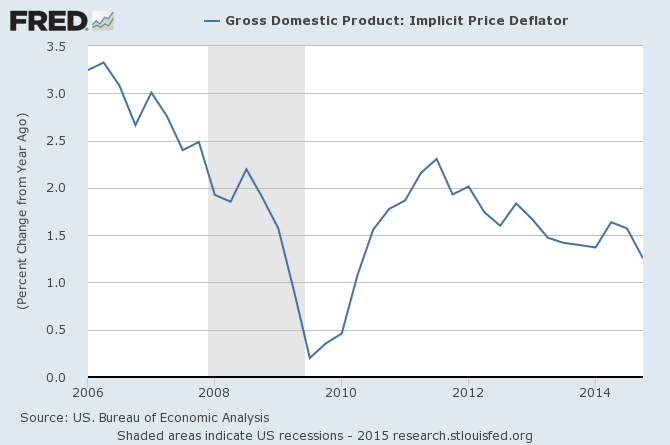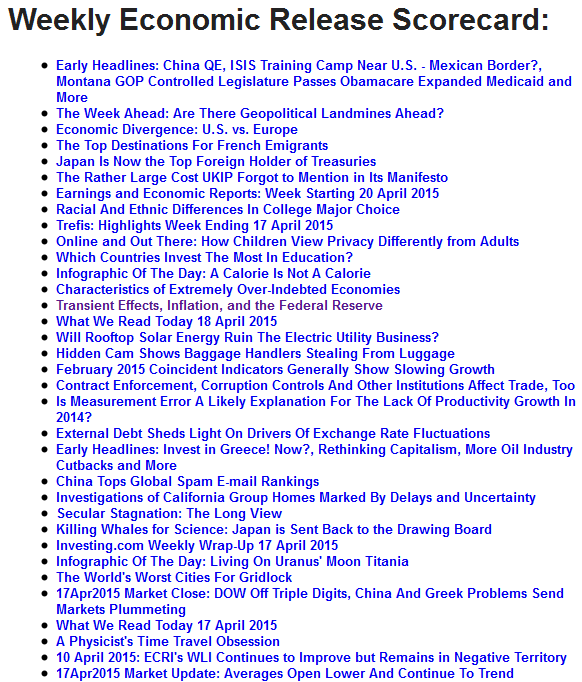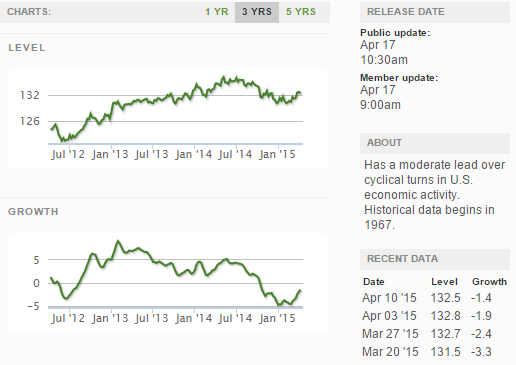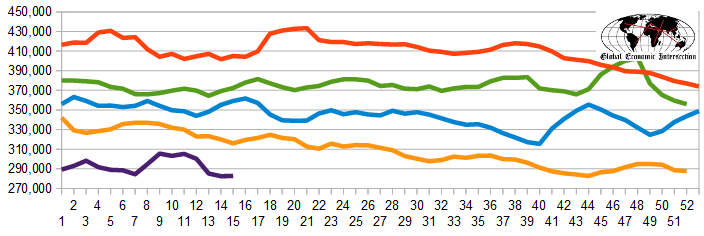According to Merriam-Webster, something "transient" lasts only a short time. The Federal Reserve's statements since January 2012 have implied that the dynamics causing the low inflation / deflation were transient in nature - and medium or long term outlook was at their 2% target. Is over 3 years of low inflation a transient and short term dynamic?
Follow up:
The Fed's board of directors - the Federal Open Market Committee (FOMC) - prefers using BEA's (Bureau of Economic Analysis) measure of inflation which shows persistent under-running the 2% inflation target since early 2012.

In all of 2012 and until mid 2013, the FOMC position was:
The Committee also anticipates that inflation over the medium term likely would run at or below its 2 percent objective.
In July of 2013 through June 2014, a warning accompanied its inflation outlook.
The Committee recognizes that inflation persistently below its 2 percent objective could pose risks to economic performance, but it anticipates that inflation will move back toward its objective over the medium term.
Then July through October 2014, inflation concerns eased.
.... the likelihood of inflation running persistently below 2 percent has diminished somewhat.
Recently, the FOMC statements read:
Inflation is anticipated to remain near its recent low level in the near term, but the Committee expects inflation to rise gradually toward 2 percent over the medium term as the labor market improves further and the transitory effects of energy price declines and other factors dissipate.
Is the FOMC flipping a coin to understand where inflation is going? What economic dynamics are they looking at to come to their inflation conclusions? Reading through past meeting minutes to pen this post leaves me believing the Fed has no ability to foresee inflation. I find it curious that recent FOMC statements have included:
Market-based measures of inflation compensation remain low; survey-based measures of longer-term inflation expectations have remained stable.
Is the FOMC relying on the majority opinion from economists for their inflation outlook?
There is little observable evidence to support that the FOMC understands inflation dynamics. What is particularly damning is that inflation growth rate has been declining for several years when a major monetary goal was to raise inflation to their target inflation range of 2%. In the FOMC QE (quantitative easing) days, the following was included in the FOMC meeting statement:
The Committee's sizable and still-increasing holdings of longer-term securities should maintain downward pressure on longer-term interest rates, support mortgage markets, and help to make broader financial conditions more accommodative, which in turn should promote a stronger economic recovery and help to ensure that inflation, over time, is at the rate most consistent with the Committee's dual mandate.
Embedding low long term interest rates is not a positive dynamic if one believes inflation needs to grow. How much of the current monetary policy is creating the dynamics which are keeping inflation low? Believing low inflation was caused by low oil prices misses the point that low oil prices could have been caused (in whole or in part) by the global deflationary effects of the FOMC's monetary policy.
The persistent decline of inflation in the USA is far from transient or short term.
Other Economic News this Week:
The Econintersect Economic Index for April 2015 is indicating growth will be sluggish. Most tracked sectors of the economy are expanding - but now there is contraction in some data sets. The negative effects of the recently solved West Coast Port slowdown (a labor dispute which had been going on for months) and bad weather continues to be seen in much of the raw data - and it will be an economic drag on 1Q2015 GDP and into 2Q2015. It is difficult to differentiate these transient issues (weather and labor) from cyclic economic conditions - but one could argue that transient issues are a cause of economic cycles.
The ECRI WLI growth index remains slightly in negative territory which implies the economy will have little growth 6 months from today.
Current ECRI WLI Growth Index
The market was expecting the weekly initial unemployment claims at 275,000 to 290,000 (consensus 280,000) vs the 294,000 reported. The more important (because of the volatility in the weekly reported claims and seasonality errors in adjusting the data) 4 week moving average moved from 285,500 (reported last week as 282,250) to 282,750. The rolling averages have been equal to or under 300,000 for most of the last 6 months.
Weekly Initial Unemployment Claims - 4 Week Average - Seasonally Adjusted - 2011 (red line), 2012 (green line), 2013 (blue line), 2014 (orange line), 2015 (violet line)
Bankruptcies this Week: Brazil-based OAS (fka OAS Engenharia e Participacoes), Energy Future Holdings, Australia-based NewSat Limite.
Click here to view the scorecard table below with active hyperlinks
Weekly Economic Release Scorecard:



